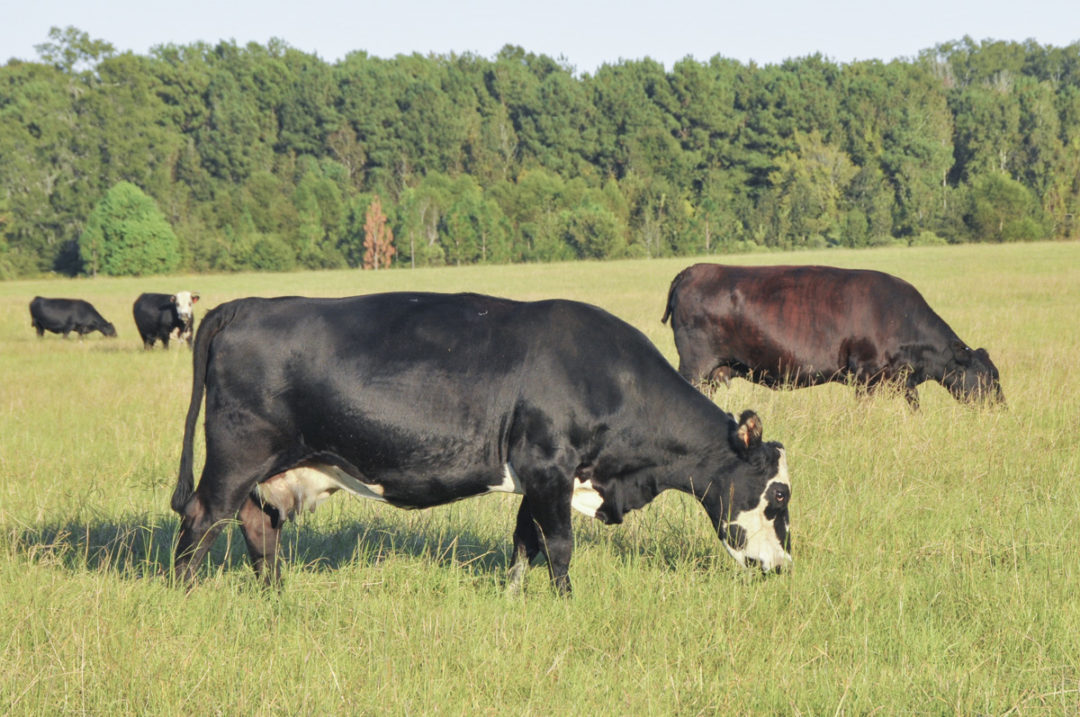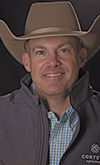Although the outlook for cow-calf producers is strong and the cattle cycle is a multiyear process, it’s important we begin preparing today so we’re ready to capitalize when opportunities arise. And that preparation can begin this grazing season with our pastures and rangeland.
No matter the market conditions, it always makes sound economic sense to prioritize grazed forages. After all, grazing is the lowest-cost way to maintain a cow herd. But whether due to too little or too much moisture, our grazing lands have taken a beating. They need recovery, and that takes time.
Focus on existing acres
Each operation is unique, with individual goals and objectives. Perhaps you see an opportunity in retaining extra heifers this fall or buying breeding stock next spring – or in a year or two. Regardless, you can enhance profit potential through the herd rebuilding and herd expansion phase by improving the pasture acres you already have.
Use this grazing season to help your existing ground recover. That starts with going easy on those valuable acres. Record herd liquidation during recent years presents an opportunity to reduce grazing pressure or extend rest periods. Consider pastures that aren’t producing at peak capacity or ones where cattle aren’t maximizing utilization due to uneven grazing, unpalatable or thorny undesirable plants or other factors.
Here are several steps to consider during the 2023 grazing season to help restore forage production and prepare for the profitable opportunities ahead:
- Get your boots dirty. As in nearly every aspect of agriculture, knowledge leads to better decision-making. Scout pastures early and often, but do it well. Checking pastures can’t be a “by the seat of your pants” activity. To truly understand what’s happening on your grazing lands, it’s important to get out of the saddle or from behind the steering wheel. Effective pasture evaluations result from boots – or, better yet, knees – on the ground. Use your hands to part the grass and get a good look at what’s happening at soil level.
- Manage moisture for maximum benefit. To help speed recovery, control low-value, undesirable plants – including viny blackberry/dewberry and opportunistic volunteer trees – ensuring moisture goes toward grass recovery, rather than growing weeds or brush. In rain-saturated areas, weeds will aggressively outcompete forage grasses. Where herbicides are needed to help reset the pasture, consider a residual herbicide, which will help control biennial thistles and other weeds early, along with later-emerging species, such as ragweed.
- Add flexibility in grazing management. Using cross fencing to split a larger pasture into two smaller pastures provides flexibility. Move cattle between paddocks based on the level of production and the amount of rest needed for the previously grazed pasture to recover. This can help improve forage utilization and allow for greater rest/recovery periods.
- Consider cultural practices to boost productivity. Incorporating weed and brush control, fertilizing according to soil tests or overseeding where needed can help restore productivity.
- Focus on becoming a low-cost producer. Remember: Grazed forages represent the cattle producer’s lowest-cost feed source. Investing in pasture improvement is an excellent cost management strategy. Don’t overlook opportunities to prebook fertilizer, herbicides, feed, hay and other inputs when pricing is favorable. Holding the line on expenses becomes especially important when you consider today’s interest rates relative to the last upturn in the cattle cycle.
Drought recovery requires extra attention
Winter precipitation has helped improve drought conditions in many areas. Although temptations will be high to save on hay feeding costs and get cows back doing what they do best, allowing cattle to graze too soon this spring likely will do more harm than good.
Drought has forced many extremely difficult decisions, but we must have grass to have a sustainable beef operation. Those difficult decisions today will pay off when moisture returns. Remember: No matter the amount of moisture your operation has (or has not) received, think long term and protect root reserves at all costs.
When moisture does return, it’s critical to think through recovery plans before turning cattle out. Not unlike areas that have experienced more typical weather patterns, drought recovery will benefit from practices that boost forage growth and maximize available moisture and soil nutrients.
Here are a few considerations especially applicable when coming out of an extended drought:
- Delay grazing to preserve roots. Any moisture will help cool-season grasses take off, but resist the temptation to turn cattle out too quickly. Following a drought, plants that appear healthy most likely still have a shallow root system. Grazing these pastures too early will inhibit root reserves from reestablishing – ultimately leading to weaker, thinner plant stands.
- Extending hay feeding can pay off. Feeding hay while allowing the roots to reestablish and rebuild may cost more today, but it will pay off in the long run. Depleting the root reserves through grazing can result in a need to reseed the pasture at some point down the road, which is very costly.
- Measure for success. Carry a yardstick to measure grass stands when you’re out checking pastures. A best practice is to wait until the cool-season grasses are at least 8 to 10 inches tall before allowing cattle to graze the pasture. Move cattle to fresh pasture after they’ve grazed down to 4 inches tall.
- Watch for weeds. Like grass, weeds love moisture. Keep an eye on bare space out in the grass, as weeds will likely grow there first. It’s important to limit any competitive plants that aren’t providing any forage value. Scout early and treat early to prevent weeds from stealing the much-needed moisture.
- Monitor hay feeding sites. There’s been a lot of hay movement into drought regions. Weeds often ride along with purchased hay. Keep an eye out for new weed infestations in areas where outside hay was fed. Determine which species of weeds are present and ensure you’re selecting effective herbicide treatments.
Herd rebuilding or expansion must start with enabling grazing land to support the additional animals over the long term. Working with your trusted advisers, such as extension specialists, consultants or industry experts, can help you make the best decisions for your operation.











